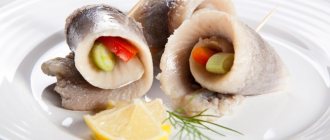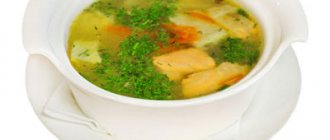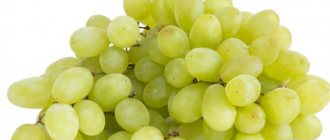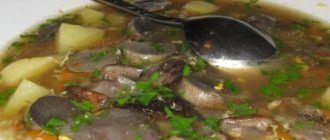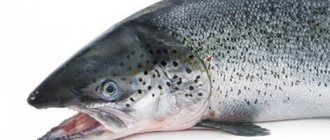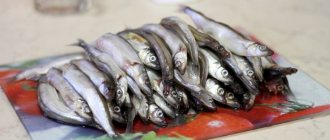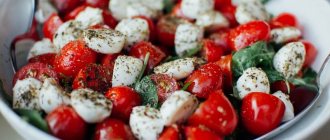01/09/2015 / Fish and seafood
| Herring caviar, BJU and calorie content per 100 g of product | |||
| Calorie content 222 kcal | Proteins 31.6 g | Fat 10.3 g | Carbohydrates 0 g |
Herring is often included in the human diet; it can easily be classified as an everyday food product. As for herring caviar, it is a kind of delicacy, and unlike expensive types of black or red caviar, it is more affordable and no less healthy.
In Europe, herring began to be in demand back in the 15th century, and it has not lost its relevance today.
Types of herring caviar
The product is divided into several types. The most common variety among Europeans is punched salted herring caviar. To prepare it, you need to remove the eggs from the film, which is called the egg. Then it is marinated, salted in oil or spices. This type is used to prepare various pastes for snacks. It is mixed with eggs, soft cheeses, and butter.
Caviar is also used in eggs. The Japanese especially value this product. It is cooked in batter, marinated in soy sauce with spices and sweet rice wine. It is also added to traditional Japanese dishes such as sushi and nigiri.
We recommend reading: The benefits of white wine and how to make it at home
This is interesting! The most common and beloved in the Land of the Rising Sun is caviar, salted together with algae. This delicacy is called Kazunoko-Kombu. The dish is present on the menu of both large restaurants and small eateries; it is characterized by an expressive, unique taste and crispy texture.
How not to make a mistake in choosing
Photo: Sigaeva O.
Herring caviar can be purchased from a barrel (it is easy to evaluate the color, taste, smell) or in a jar.
How to choose the right product in a closed container?
- There are no dents or signs of swelling on the can.
- Find the production date and shelf life (all numbers are extruded from the inside). Caviar is canned immediately after extraction, no later than October; December caviar is frozen, less tasty, and contains a lot of water.
- The product does not contain additives: glycerin E400, methenamine E239, etc.
- Shake the jar. It’s great if the caviar moves in it.
- After opening, pay attention to the cleanliness of the inner surface of the lid - a quality product never sticks to the walls.
- The quantity is at least 65% of the container volume.
Carefully! If stored for a long time, toxic tyramine can accumulate in the tin. There are two reasons for this: initially stale raw materials and the wrong amount of salt chosen by the manufacturer.
It turns out that caviar is safer to cook at home. But for this you should choose high-quality herring with caviar:
- Signs of freshness: high elasticity (there are no dents left when fingers press on the carcass); eyes are light, without film; the skin is shiny, without mucus and yellow spots.
- The fish should be chilled, not frozen.
- The smell is specific, characteristic of raw herring, but not repulsive.
- The length is at least 25 cm, the mouth is rounded (characteristic of females), and not narrow and elongated (as in males).
Composition and calorie content of herring caviar
Depending on the place where the herring is obtained, the composition and calorie content of the caviar may vary. For example, fish caught in subpolar latitudes have a significantly higher fat content percentage than Pacific fish. So, the first has 33% fat, while the second has only 12%. The fattest caviar comes from herring caught at the end of the summer season.
Calorie content and ratio of proteins, fats and carbohydrates (BJU) of herring caviar
| Product name | Proteins, g | Fats, g | Carbohydrates, g | Kcal |
| Salted herring caviar | 31,6 | 10,3 | 0 | 222 |
| Fresh fish | 16,3 | 10,7 | 0 | 161 |
The product has a rich composition, which includes vitamins, beneficial micro- and macroelements, and fatty acids.
It contains vitamins:
- A, which helps strengthen the immune system, normalizes metabolism, prevents premature skin aging and aging;
- D – responsible for the formation of the skeleton and teeth;
- E is a strong antioxidant that normalizes the functioning of the heart muscle and gonads;
- N - useful because it improves the functioning of the thyroid gland, normalizes blood sugar levels;
- P – improves the body’s absorption of protein, is responsible for the condition of the skin;
- group B - are sources of energy, normalize metabolism, improve skin condition. They lower cholesterol and normalize the functioning of the nervous, blood and digestive systems. They stabilize the functions of muscles and nerves and have regenerative properties.
The useful composition of the product also includes:
- Macroelements such as potassium, calcium, phosphorus, sodium, magnesium, chlorine, silicon. Thanks to their properties, they improve brain function and memory, strengthen the immune system, promote the growth and development of bones, teeth, nails, and hair. In addition, minerals regulate water and acid-base balance;
- Useful microelements: iron, iodine, copper, selenium, fluorine, zinc, which together have antioxidant, anti-inflammatory, strengthening and protecting properties. They normalize the functions of the digestive system, strengthen tooth enamel and bone tissue, renew cells, increase immunity, stabilize hormonal levels;
- Fatty acids - poly- and mono-saturated acids Omega-3, Omega-6 - are involved in metabolic processes, the production of testosterone, regulate the metabolism of protein, sugar, and B vitamins.
Even children who don’t like it so much know about the benefits of fish oil. This is the source of energy needed by the body.
Chemical composition
Herring is considered a common type of fish on the globe, so even people with a modest income can afford it. Its dimensions vary from 25 to 45 centimeters, and its weight reaches 400 grams. Astrakhan salted herring “zalom” is especially valued for its meatiness and spicy taste. This is a particularly large fish, reaching 60–75 centimeters in length, weighing 500–700 grams.
The body of an ordinary herring is laterally compressed, the edge of the belly is jagged. Scales are large, rarely small. The caudal fin is forked, the dorsal is located above the ventral. Mouth is moderate. Teeth falling out.
All representatives of the herring genus are used in the food industry for the production of fishmeal.
Table No. 1 “Nutritional value of herring”
| Name | Nutritional value of fish per 100 grams of product |
| Calorie content of fried herring | 265 calories |
| Calorie content of salted herring | 240 calories |
| Calorie content of smoked herring | 218 calories |
| Calorie content of pickled herring | 155 calories |
| Fats | 18.5 grams |
| Squirrels | 17.5 grams |
| Water | 60.3 grams |
| Saturated fatty acids | 4.0 grams |
Table No. 2 “Chemical composition of herring”
| Nutrients | Content of nutrients per 100 grams of product, milligrams |
| Vitamins | |
| Choline (B4) | 65 |
| Niacin (RR) | 3,217 |
| Tocopherol (E) | 1,07 |
| Ascorbic acid (C) | 0,7 |
| Pantothenic acid (B5) | 0,645 |
| Pyridoxine (B6) | 0,302 |
| Riboflavin (B2) | 0,233 |
| Thiamine (B1) | 0,092 |
| Retinol (A) | 0,028 |
| Cyanocobalamin (B12) | 0,01367 |
| Folic acid | 0,01 |
| Calciferol (D) | 0,0042 |
| Phylloquinone (K) | 0,0001 |
| Macronutrients | |
| Potassium | 327 |
| Phosphorus | 236 |
| Sodium | 90 |
| Calcium | 57 |
| Magnesium | 32 |
| Microelements | |
| Iron | 1,1 |
| Zinc | 0,99 |
| Copper | 0,092 |
| Selenium | 0,0365 |
| Manganese | 0,032 |
Herring is one of the fattest fish; on the contrary, it contains practically no carbohydrates. Interestingly, 250 grams of sirloin contains the daily protein requirement for an adult.
What are the benefits of herring caviar?
Herring caviar has a number of useful properties. The minerals and other beneficial elements included in its composition protect the body from colds, strengthening the immune system.
Lecithin, which the product contains, maintains health at the desired level, stabilizing blood pressure, restoring damaged tissue, and increasing hemoglobin.
Due to the benefits of salted herring caviar and minimal harm, it can be eaten while adhering to a dietary diet.
Retinol promotes the formation of carotene, which is responsible for the health of human eyes.
Salt, which is part of the fish composition, kills bacteria and inhibits the activity of toxic substances. But for people suffering from edema or having kidney problems, lightly salted herring caviar will be more beneficial.
Useful properties also include:
- anti-inflammatory and restorative effect;
- beneficial effect on the body as a whole;
- strengthening the skeleton, bones, joints, teeth, nails;
- normalization of the thyroid gland;
- slowing down the aging process.
For men, the benefits of herring caviar are much higher than the harm.
Useful microelements help improve the condition of the reproductive system. Consumption of the product helps improve sperm quality, increases libido, and enhances the motility of germ cells.
The risks are associated with an overdose of the salty product, which can lead to a decrease in the male hormone testosterone.
The benefit of herring caviar for women is that, thanks to vitamin E, the condition of the reproductive system improves. Omega acids promote the production of healthy eggs, which gives you a chance to get pregnant faster and serves as the key to the correct formation of the fetus.
Contraindications and harm to the body
The harm to the body primarily lies in the high salt content in the product. Consumption will immediately lead to fluid retention in the body, which will cause swelling and increase the load on the kidneys.
Herring is contraindicated in the following cases:
- in the presence of pathologies of the kidneys and liver;
- gastritis;
- hypertension;
- recurrent or constant migraines;
- diabetes mellitus;
- allergic reaction;
- when there is increased acidity in the stomach.
The list of prohibitions applies only to salted fish, since the product is allowed to be consumed baked or boiled. You can eat salted herring without fear for your health only after it has been soaked in black tea or milk.
It is not advisable for children under 3 years of age to eat salted fish, as is nursing mothers.
Attention! If you suffer from obesity, then you should completely avoid smoked fish due to its high calorie content.
© Justyna Kaminska — stock.adobe.com
Is it possible for pregnant and lactating women to eat herring caviar?
Doctors recommend eating herring caviar, rich in useful elements, during pregnancy. Omega-3 helps in the formation and development of the skeleton and internal organs of the fetus. In addition, the acid promotes a better blood supply to the placenta, which makes childbirth easier.
Nursing mothers should not eat herring delicacy. Because of it, the taste of breast milk changes, which then becomes unpleasant for the baby. As a result, the child may refuse it. But caviar can be consumed baked or boiled.
Beneficial features
An analysis of the nutrients in herring caviar shows how healthy it is:
- Stimulates vital processes: participates in hematopoiesis, tissue renewal, energy metabolism, supports the immune system, activates metabolism, triggers regeneration, removes waste and toxins, and prevents the development of cancer cells.
- Beneficial for the cardiovascular system: thins the blood and normalizes blood pressure, increases hemoglobin, reduces the risk of thrombophlebitis and varicose veins, cleanses the bloodstream of atherosclerotic plaques and lowers cholesterol levels in the blood.
- It heals the body due to lecithin, which supplies nutrients and vitamins to all cells and increases the effectiveness of medications.
- It has anti-inflammatory and restorative properties, which is especially important in the postoperative period.
- Normalizes the functioning of the thyroid gland due to the high content of fatty acids and vitamins.
- It has a beneficial effect on the nervous system: activates mental activity, improves mood, increases performance and endurance, relieves depression, the effects of stress, tension, drowsiness, and suspiciousness.
- Used in modern cosmetology (as part of masks and creams): smoothes wrinkles, increases skin elasticity, moisturizes and rejuvenates it, evens out complexion, fights pustules, saturates cells with collagen, elastin and fatty acids, and eases the course of psoriasis.
- Strengthens bones and joints: minimizes the risks of rheumatoid arthritis, increases bone strength.
Due to its relatively low calorie content, herring caviar is promising for dietary and therapeutic nutrition.
How to cook herring caviar and what it goes with
Healthy fish eggs can be consumed as an independent product without harm to health. They also go well with a potato side dish, rice, vegetables and are great for making sandwiches.
You can pickle caviar in this way:
- Release the product from the container.
- Pour 300 mg of water into the vessel and add 1 tbsp. l. salt.
- Add 1 tbsp. l. vegetable oil and a couple of bay leaves.
- Add caviar and mix gently.
- Place in a cool place for a day.
We recommend reading: Benefits of bell pepper, properties
To make a paste for sandwiches, you need to mash the salted caviar with a fork, mix with softened butter, dill, salt and pepper. Place the mixture in a jar and cover with a lid. Place in the refrigerator. Can be eaten immediately after cooling.
We recommend reading: Chili peppers: benefits and harms, properties, how to eat them
Storage Secrets
Herring caviar in a sealed jar can be stored according to the terms indicated on the packaging (the exact terms depend on the manufacturer).
Once opened, consume the caviar within 3 days. Store only in the refrigerator at a temperature not lower than –6 °C.
Caviar oil remains fresh for 1–2 days longer if it is kept under a tightly sealed lid all this time.
A jar of herring caviar on the counter is a familiar sight. And how often do we pass by without even thinking that there is a storehouse of useful substances on the shelf for little money? Maybe we should take it today?
Is capelin caviar good for health?
How to choose herring with caviar
When choosing a fresh product, you need to pay attention to the following points:
- The gills of the fish should be elastic, flexible and scarlet: you should not buy herring with gray gills;
- you need to choose a fish with a rounded mouth - this is a sign of a female;
- eyes should be light, transparent, but not cloudy;
- There should be no yellow stripes or spots on the scales.
It is recommended to buy chilled fish rather than frozen. In this case, its beneficial properties last longer.
Content of vitamins and microelements
Herring caviar is enriched with vitamins, B, and contains vitamin D. They are vital and maintain the general condition of a person at the proper level.
If we consider the calorie content of the described delicacy, it is located at the very beginning of the high-calorie food group. With moderate consumption, herring caviar can even be included in diets.
Like many other seafood, herring and its components are saturated with the following microelements: calcium, sulfur, selenium, iron, magnesium, iodine, sodium, zinc, potassium.
Pickling recipes
Spiced herring
Ingredients:
- water – 1 liter;
- whole herring – 2 pieces;
- sugar – 7.5 grams (1.5 teaspoons);
- salt – 50 grams (4 dessert spoons);
- dried carnation flowers – 5 pieces;
- bay leaf – 4 pieces;
- allspice – 10 peas.
Cooking method
- Boil water in a saucepan, add spices, salt, sugar.
- Cool the brine, pour it over the fish, leave at room temperature for an hour, then put it in the refrigerator for 2 to 7 days.
- Before serving, cut into pieces, garnish with pickled onions and herbs.
Spicy herring with mustard
Ingredients:
- water – 900 milliliters;
- whole herring – 2 pieces;
- mustard – 30 grams (2 tablespoons);
- sugar – 45 grams (3 tablespoons);
- salt – 75 grams (5 tablespoons);
- chopped herbs (dill or parsley) – 15 grams (1 tablespoon);
- coriander seeds – 15 grams (1 tablespoon);
- bay leaf – 10 pieces;
- black pepper – 15 peas.
Indoor geranium leaves turn red and dry: why this happens, the main reasons, prevention, proper care
Cooking sequence:
- brush the fish with mustard and place in a glass container (enamel or plastic dishes will give the fish a metallic taste);
- boil water in a saucepan, add salt, sugar, spices;
- cool the brine, pour over the carcasses, leave the herring to marinate for 2 hours;
- put in a cool place for three days.
Fish in brine (strong salt solution)
Method for preparing brine:
- Boil a liter of water, slowly add salt to the liquid until it stops dissolving. Visually, you will see that the crystals simply begin to settle to the bottom.
You can check the readiness of the brine using a raw egg: lower it into the water; if it starts to sink, this indicates an insufficient amount of salt in the water, and if it floats on the surface, the brine is ready.
- To improve the taste, add spices to the liquid, based on your own preferences. These can be: black, white, red ground or allspice, clove buds, bay leaves and juniper berries. Cardamom grains, coriander seeds, mustard seeds, vinegar, onions, horseradish, green sour apple, lemon juice, vodka, and soy sauce will not spoil the taste. However, it is not recommended to use iodized salt to prepare brine.
- Place two herring carcasses in a bowl, pour cooled brine over the fish so that it “swims” in the brine. Let it sit for an hour, then put it in the refrigerator for 1 – 2 days.
Dry pickling
Ingredients:
- large whole herring – 1 carcass;
- ground black pepper – 7.5 grams (1.5 teaspoons);
- sugar – 5 grams (1 teaspoon);
- salt – 7.5 grams (1.5 teaspoons).
Recipe:
- Wipe the fish dry with a paper towel or napkins;
- mix black pepper, salt, sugar in a glass container;
- thoroughly rub the fish carcass with the mixture on all sides, including the empty cavity under the gill covers;
- Wrap the herring tightly in three layers of cling film and place in the refrigerator for 2 days.
Express method of salting herring
For quick cooking, clean one fish, remove the insides, remove the skin, separate the fillet from the backbone, finely chop and place in a glass container. Then prepare the brine: dissolve 45 grams of table salt (3 tablespoons) in a liter of cold water. Pour it over the fish and wait an hour and a half. Drain the brine and make a new one: mix 250 milliliters of cold water with 15 milliliters of 9% vinegar. Pour it over the herring for 5 minutes. Drain the brine. Cut the onion into half rings, add to the fish, stir. Pour vegetable oil over the herring and leave for 25 minutes. The fish is ready to eat.
Cooking method:
- Peel the herring, gut it, cut into pieces;
- provide the fish with salt and spices, leave for half an hour;
- beat the egg, add flour;
- put the frying pan on the fire, add vegetable oil;
- Bread each piece of herring in egg and flour, fry until cooked on both sides;
- Place on a napkin to drain excess fat.
Fried fish is recommended to be served with fresh vegetables.
Remember, when exposed to air, herring fat oxidizes under the influence of oxygen, which leads to the appearance of a rancid taste, unpleasant odor and “rusty” color. Cut fish is stored exclusively in vegetable oil, and whole fish is stored in brine or marinade.
